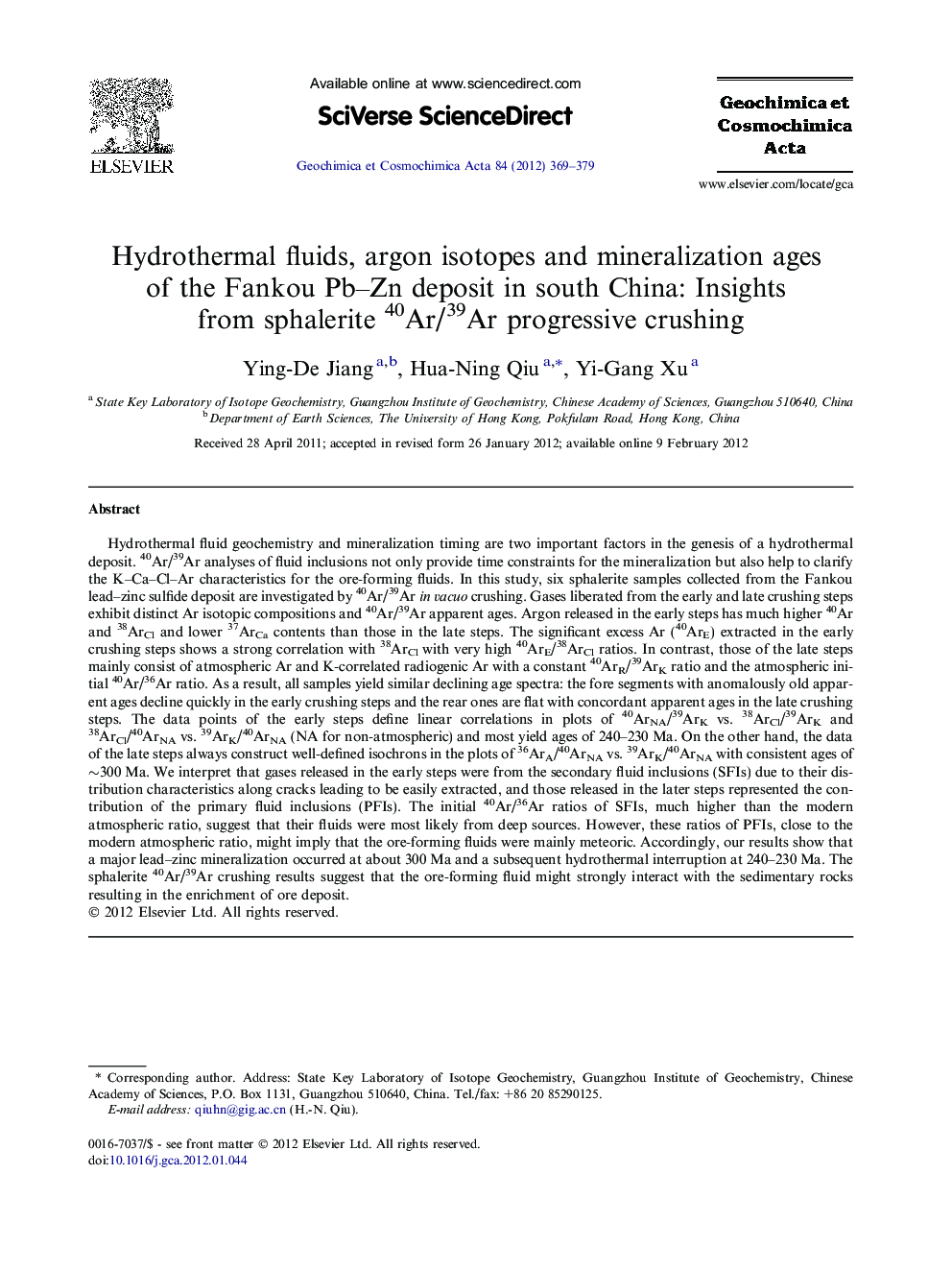| کد مقاله | کد نشریه | سال انتشار | مقاله انگلیسی | نسخه تمام متن |
|---|---|---|---|---|
| 4702954 | 1638073 | 2012 | 11 صفحه PDF | دانلود رایگان |

Hydrothermal fluid geochemistry and mineralization timing are two important factors in the genesis of a hydrothermal deposit. 40Ar/39Ar analyses of fluid inclusions not only provide time constraints for the mineralization but also help to clarify the K–Ca–Cl–Ar characteristics for the ore-forming fluids. In this study, six sphalerite samples collected from the Fankou lead–zinc sulfide deposit are investigated by 40Ar/39Ar in vacuo crushing. Gases liberated from the early and late crushing steps exhibit distinct Ar isotopic compositions and 40Ar/39Ar apparent ages. Argon released in the early steps has much higher 40Ar and 38ArCl and lower 37ArCa contents than those in the late steps. The significant excess Ar (40ArE) extracted in the early crushing steps shows a strong correlation with 38ArCl with very high 40ArE/38ArCl ratios. In contrast, those of the late steps mainly consist of atmospheric Ar and K-correlated radiogenic Ar with a constant 40ArR/39ArK ratio and the atmospheric initial 40Ar/36Ar ratio. As a result, all samples yield similar declining age spectra: the fore segments with anomalously old apparent ages decline quickly in the early crushing steps and the rear ones are flat with concordant apparent ages in the late crushing steps. The data points of the early steps define linear correlations in plots of 40ArNA/39ArK vs. 38ArCl/39ArK and 38ArCl/40ArNA vs. 39ArK/40ArNA (NA for non-atmospheric) and most yield ages of 240–230 Ma. On the other hand, the data of the late steps always construct well-defined isochrons in the plots of 36ArA/40ArNA vs. 39ArK/40ArNA with consistent ages of ∼300 Ma. We interpret that gases released in the early steps were from the secondary fluid inclusions (SFIs) due to their distribution characteristics along cracks leading to be easily extracted, and those released in the later steps represented the contribution of the primary fluid inclusions (PFIs). The initial 40Ar/36Ar ratios of SFIs, much higher than the modern atmospheric ratio, suggest that their fluids were most likely from deep sources. However, these ratios of PFIs, close to the modern atmospheric ratio, might imply that the ore-forming fluids were mainly meteoric. Accordingly, our results show that a major lead–zinc mineralization occurred at about 300 Ma and a subsequent hydrothermal interruption at 240–230 Ma. The sphalerite 40Ar/39Ar crushing results suggest that the ore-forming fluid might strongly interact with the sedimentary rocks resulting in the enrichment of ore deposit.
Journal: Geochimica et Cosmochimica Acta - Volume 84, 1 May 2012, Pages 369–379